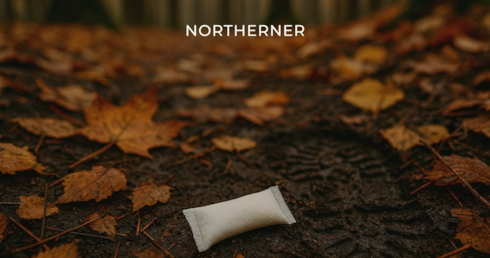How Long Do Nicotine Pouches Take to Decompose?
Nicotine pouches (tobacco-free snus) don’t disappear once discarded. Discover how long they take to break down, what happens to each material, and how to dispose of them responsibly.

Key Points
- Even when a pouch looks decomposed, microscopic residues can remain.
- If every UK user dropped just one pouch a week, millions would end up in nature each year.
- Each pouch can contain enough nicotine to impact aquatic life if it reaches waterways.
Why This Matters
Nicotine pouches are a discreet, tobacco-free nicotine option for adult users. But just like other single-use items, they leave a trace if not disposed of correctly.
In Sweden, where pouch use is most common, snus ranks as the second most common litter type, just after cigarette butts. According to Håll Sverige Rent’s (Keep Sweden Tidy) Skräprapporten 2025 (“The Litter Report 2025”), 21% of all litter in Swedish cities consists of snus, and around 65% of that is white or tobacco-free snus.
Even a single pouch may seem small, but millions used every week can leave a lasting mark on the environment. With nicotine pouch use growing in the UK, similar litter patterns are already emerging.
What’s Inside a Nicotine Pouch
Each pouch typically contains:
- Pouch shell: Primarily cellulose fibre, like a teabag, but held together by a binding agent that may include a small plastic component.
- Filling: Plant-based fibres, nicotine, flavourings, additives.
- Can: Plastic container which is usually recyclable.
While most of the filling is biodegradable, the shell’s binding agent prevents complete breakdown, which means the pouch can leave microscopic traces long after use.
👉 For a detailed look at ingredients, visit our guide: What are nicotine pouches made of?
How Long It Takes to Decompose

Each component breaks down at a different pace.
We’ve rounded it up:
|
Component |
Material |
Estimated Time in Nature |
|
Pouch shell |
Cellulose & small plastic binder |
1–5 years for visible breakdown; plastic residue may remain longer |
|
Filling |
Plant fibres |
~3–6 months |
|
Nicotine |
Water-soluble alkaloid |
Degrades over time; may leach into soil or water |
|
Flavourings & additives |
Aromas, humectants, salts |
Varies: some dissolve quickly, others linger |
These timelines depend on sunlight, moisture, and temperature. But the key takeaway from Sweden’s case is clear: pouches never disappear completely. As Håll Sverige Rent notes, “nothing disappears — everything remains”.
Do Nicotine Pouches Produce Microplastics?
There’s no definitive scientific consensus. However, Swedish environmental authorities confirm that pouch shells include a small plastic binder that prevents full biodegradation.
While the organic fibres degrade, these tiny plastic fragments can remain, whether they count as “microplastics” is still being studied.
Why the Pouch Never Fully Disappears
Even when a pouch looks decomposed, fragments of the non-biodegradable binder can remain in soil and water for decades. These particles may:
- Remain in soil or waterways for decades.
- Be eaten by worms and aquatic life.
- Transport pollutants through the ecosystem.
Why People Don’t View Pouches as Litter
Because pouches are small, dry, and odourless, many users don’t see them as “real” litter. Flicking a used pouch onto the ground might feel harmless, but these small moments multiply quickly. Recognising this habit is the first step toward change.
How to Dispose of Pouches Responsibly
Consider these steps to responsibly dispose of pouches:
✅ Use the can lid: Most tins have a catch compartment for used pouches.
🚫 Never flush: Pouches don’t dissolve in water and can harm aquatic life.
♻️ Recycle the can: Empty tins are recyclable in most UK plastic schemes.
📣 Spread awareness: Many users still think pouches are fully biodegradable.
Collective Impact: Small Habits, Big Difference

Keeping used pouches in your pocket until you find a bin, or storing them in your can’s lid, might seem small, but it prevents long-lasting litter.
Your habits today shape cleaner parks, rivers, and city streets tomorrow.
Key takeaway: While nicotine pouches offer convenience and discretion, their materials outlast their momentary use. By pocketing your pouch until you reach a bin, or helping to educate others, your choices shape a cleaner, healthier environment for everyone.
FAQs
Are nicotine pouches biodegradable?
Not completely. While most nicotine pouch fillings are made from plant fibres that naturally break down, the pouch shell includes a small plastic binder that prevents full biodegradation. Over time, the organic material decomposes, but plastic residues can remain in soil or water.
Do nicotine pouches decompose?
Partially, the organic filling breaks down, but the plastic binder means the pouch isn’t fully biodegradable.
How long does decomposition take?
Typically one to five years for visible breakdown, but traces may linger depending on environment and material.
Can I recycle nicotine pouches?
No, only the empty can is recyclable; used pouches go in general waste.
